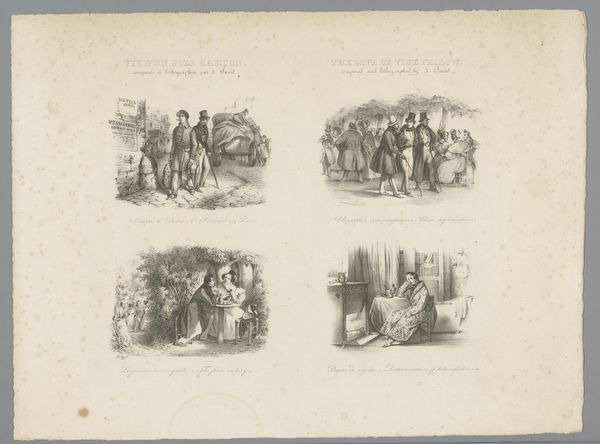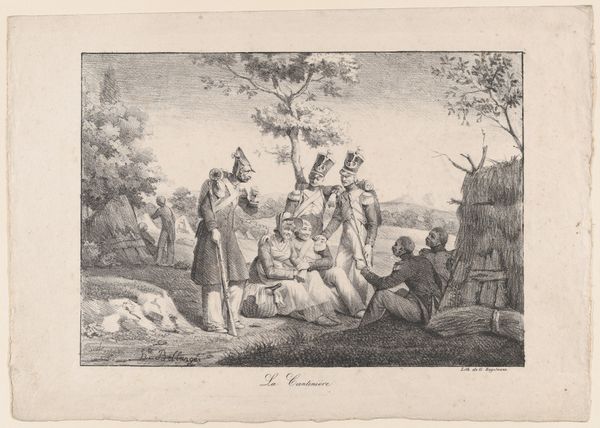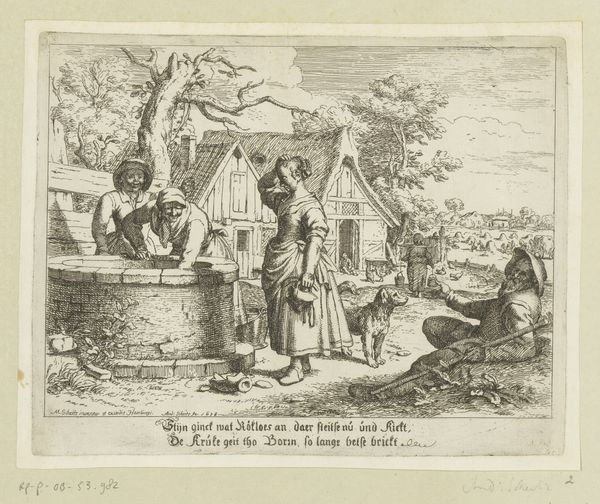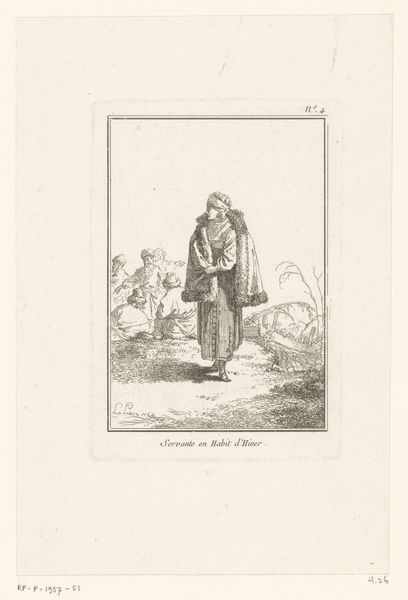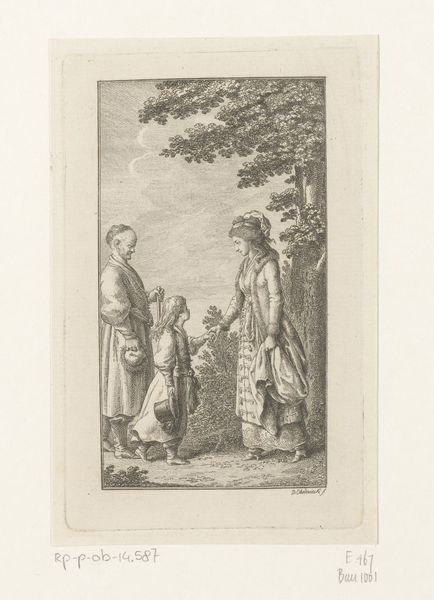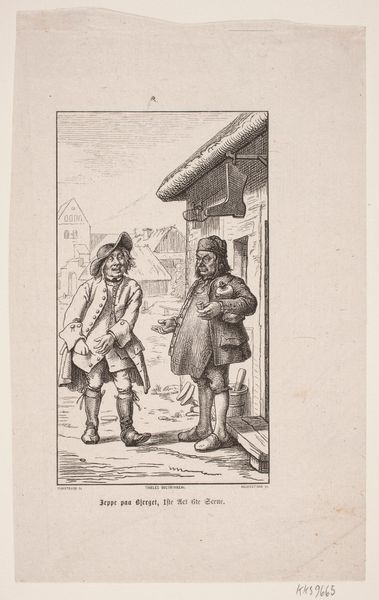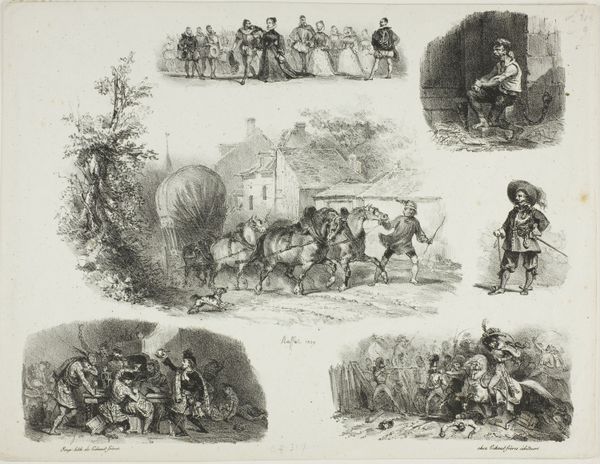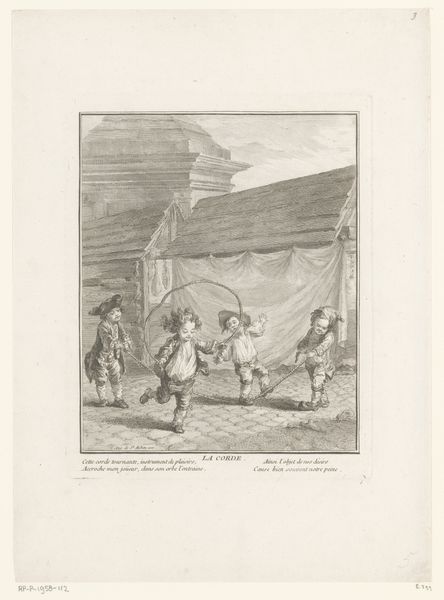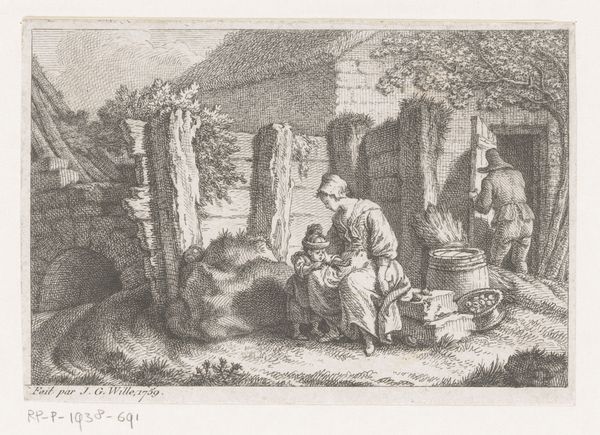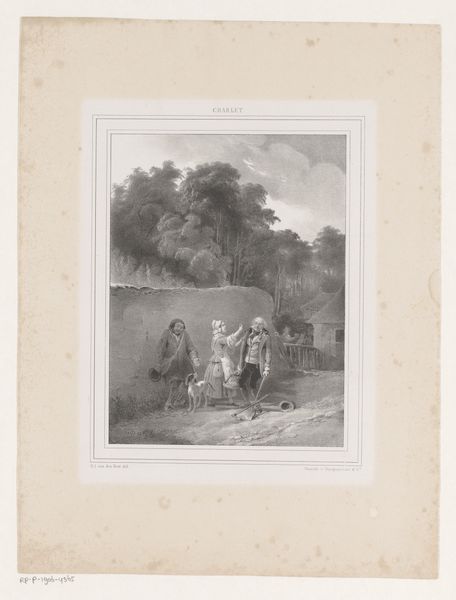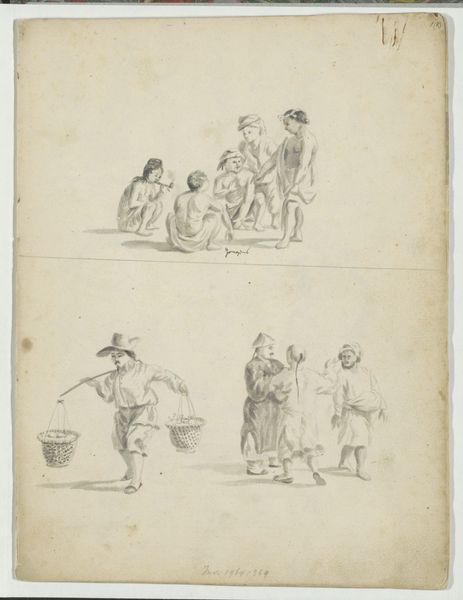
print, engraving
# print
#
landscape
#
cityscape
#
genre-painting
#
history-painting
#
engraving
Dimensions: height 272 mm, width 183 mm
Copyright: Rijks Museum: Open Domain
Alexandre Lacauchie's "France Militaire, Porte de Haarlem" from 1853-1858, presents us with a study in contrasts, neatly divided into distinct registers. Above, the architectural solidity of Haarlem's gate dominates, its stone rendered with precise, almost clinical detail. This is set against the organic forms of the water and foliage, a play of rigid geometry versus natural fluidity. The composition is bisected, yet connected by the bridge, a symbol of transition between the built environment and the living landscape. Below, the register shifts to ethnographic documentation: figures in traditional Dutch attire, each meticulously rendered, their postures and garments speaking to the social structures of the time. Lacauchie seems to be interested in the semiotics of place and identity. The architectural rendering of the gate and the detailed costumes of the figures function as signs, encoding information about Dutch society for a French audience. The work engages with the broader discourse of how nations construct their identities through representations of space and its inhabitants. It is a reminder that our understanding of the world is always mediated through layers of cultural interpretation.
Comments
No comments
Be the first to comment and join the conversation on the ultimate creative platform.
